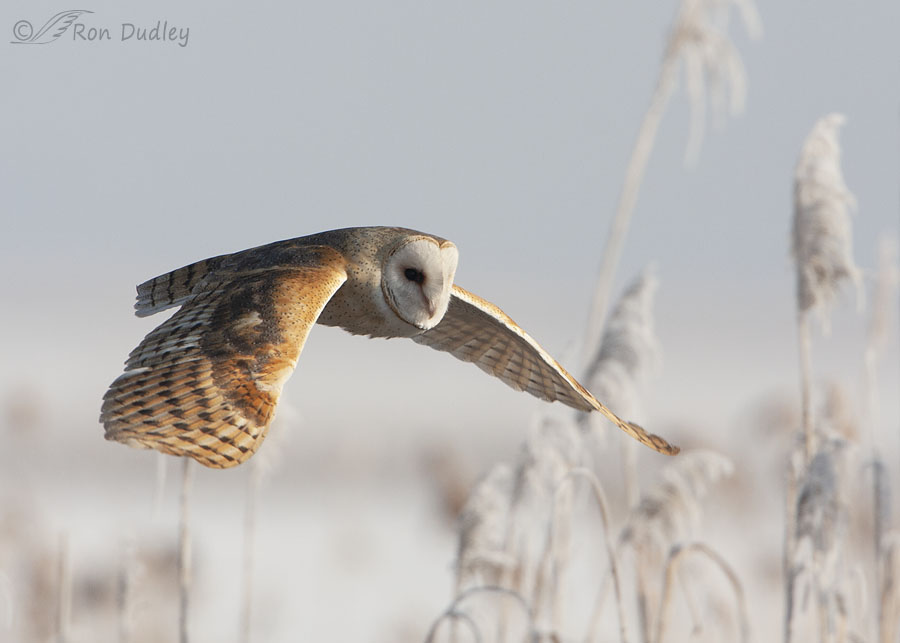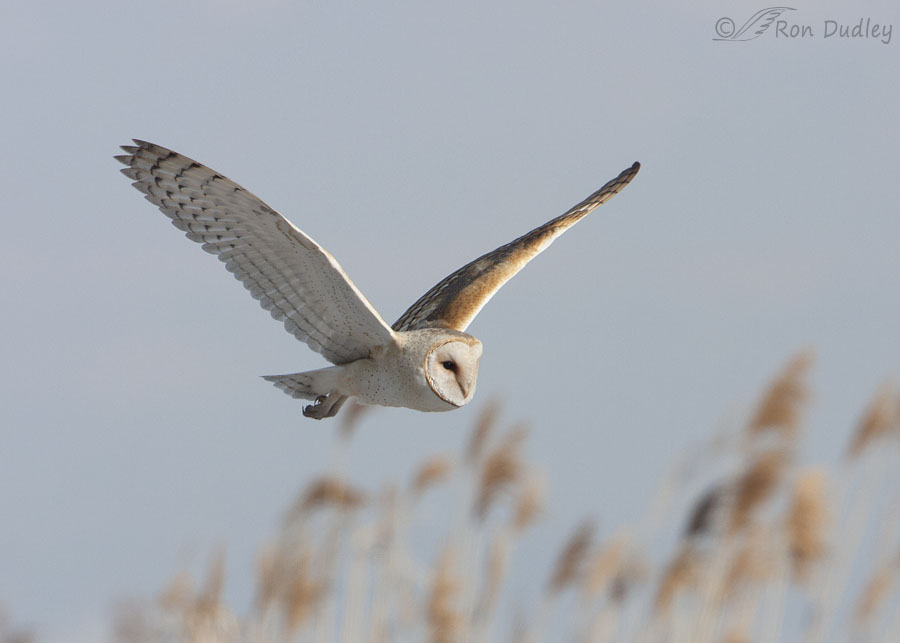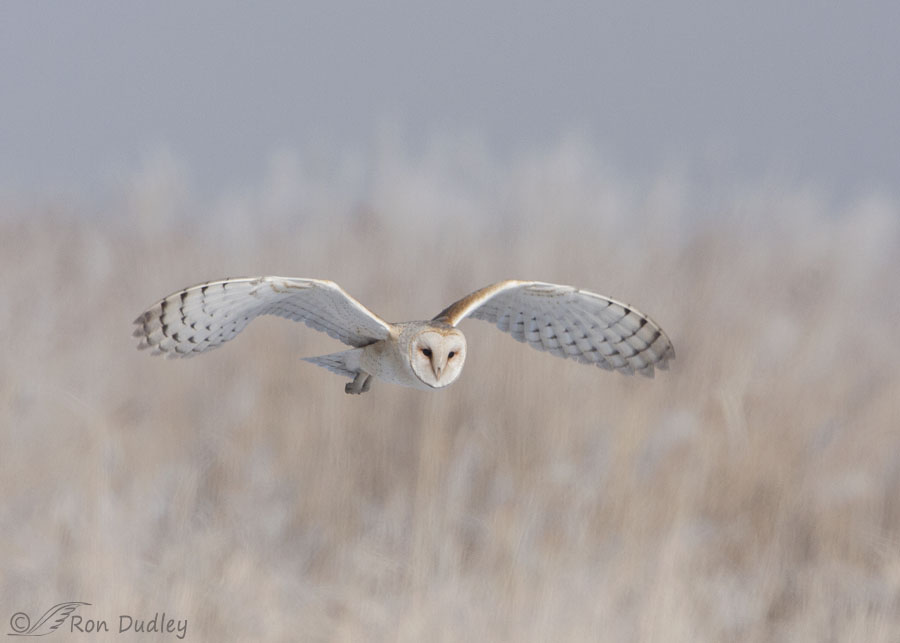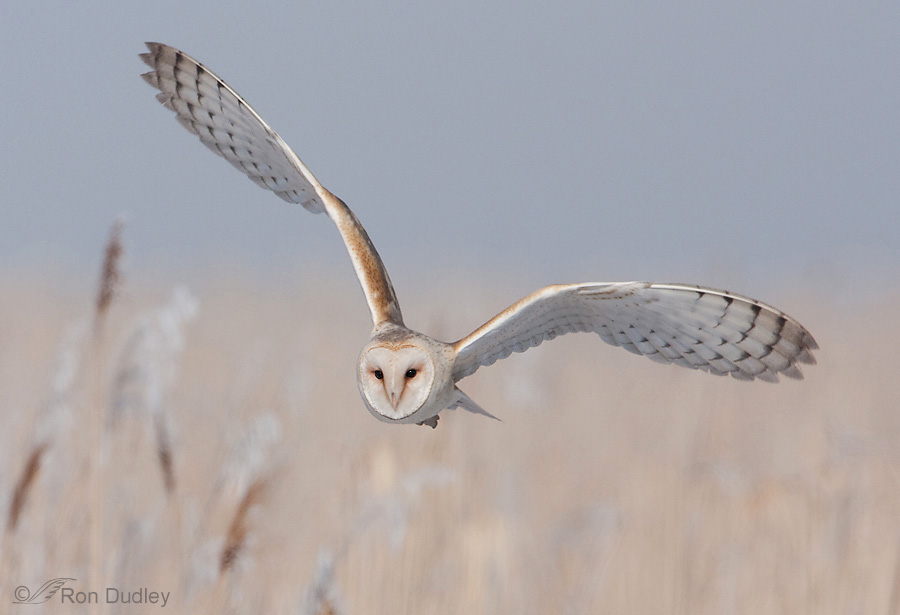And a demonstration of why it’s so aggravatingly difficult to get light in the eyes (catch lights) of Barn Owls.
All three of these photos were taken before 10:15 AM in February at Farmington Bay WMA. The low angle of the morning sun in the winter sky will become important to the point I’m trying to make in today’s post.
In the past I’ve endlessly discussed the importance of getting light in the eye (a catch light) of my avian subjects. Catch lights provide a glint or spark to the eye, giving the subject “life”. When catch lights are missing, especially in dark or black eyes, the eyes can appear almost as a black hole, lacking life.
Some conditions and some subjects make catch lights more difficult to get. When the sun is high in the sky the brow ridge or eye orbit tends to prevent sunlight from striking the eyeball so there is no catch light reflected to the viewer. And if the eyes of the subject are set deeply in the skull, direct light has a much more difficult time reaching the surface of the eye.
That’s where Barn Owls come in.

Barn Owls are notorious amongst bird photographers for their deeply set eyes that make catch lights difficult to get. This owl is so strongly side lit that there’s very little light reaching the right side of its face so it’s completely understandable why there’s no light in its right eye, the only one we can see.
If this had been any other species of bird I most likely wouldn’t have a catch light in its eye either.

But the right side of the face of this owl is completely lit up. In this situation most birds would have a catch light in the right eye, but not Barn Owls. Their eyes are too deeply set in their skull for direct light to reach the eye in this lighting situation.
Really really sharp eyes may spot a very faint catch light in the right eye of this bird. But it’s so faint it’s effectively missing.

Even in this shot, where the owl is looking at me so we see both sides of its face and both sides are lit up by the morning sun behind me, no direct light is reaching the surface of its eyes so there’s no light in either eye. Barn Owls give us very little wiggle room when it comes to getting catch lights in their eyes.
As a result of this anatomical quirk I’m a little more tolerant of not having light in the eye of my Barn Owl subjects than I am with other species of birds.
But only a little.
Ron
PS – As an afterthought I thought I should include a photo demonstrating that it actually is possible to get a catch light in Barn Owls.



Wonderful…love these stardust sprinkled birds…
Very nice photos despite no catch light in most, they do have deep set eyes. I have mixed feelings about finding owl in daylight. It’s always “Oh a barn owl in daylight” with great excitement followed by “Not a good sign”, with sadness.
I have the same ambivalent reaction, April. I feel strongly about both extremes.
Wonderful shots Ron! Thanks for sharing!
Charlotte Norton
Thanks, Charlotte.
The lack of catch light in the eyes adds to the pathos of a nocturnal creature out hunting in the snow in the light of day. The right side of the the first owl’s face being cast in shadow reinforces that notion for me as well.
And on the lighter side, how in the hell do they fold up those enormous wings?
On the lighter side… I don’t know, Marty. I often think “where did you put all that?”
Beautiful photos with and without catch lights.
Thanks, Lyle.
I ‘think’ I first learned about catch lights from you. And yes, they are important and add life to a photo. Owls are an exception for me though. Those black brooding ‘holes’ add to the mystery that is part of an owl.
It is wonderful to see that it is possible (albeit rare) to get a catch light though.
“Those black brooding ‘holes’ add to the mystery that is part of an owl”
Very good point, EC.
Ron,
Love the owl. Thanks for the commentary.
Stephen
Thank you, Stephen.
A breath-takingly strange and beautiful bird. And fabulous photos. Those dark eyes against the light background and nearly white body – no way that is not “life.”
Sallie, Barn Owls are indeed strange birds. Thanks.
Catchlights or no, the Barn Owls are among the MOST compellingly beautiful
birds the you present to us, and I think that the phrags make a perfect surround
for their coloring and markings….in just our generation, ophthalmology has
really changed its recommendations on the timing of cataract surgery ( much
earlier ), and it’s a BREEZE of recovery…..after that, you’ll be amazed at the change in your color perception, let alone visual acuity !
Yes, Kris, the colors! No one told me about that before my surgery or I’d have had it done much earlier. The ophthalmologist said the colors are now “more accurate,” but how can he know? In any case, much cooler, the yellow wash of old lenses is gone, and sunlight sparkles.
Kris and Sallie, thanks for the gentle push for me to get it done. Too many things on my plate right now but soon, hopefully.
Beautiful! I heard an owl early this morning when I was out with my dog .
Thank You and Take Care,
Kaye
Park City (Pinebrook)
Thanks, Kaye.
I just had my eye exam recently. My eyes post-dilation were a bit like this. Interesting to read about this issue.
I need to get back in and have mine examined. I already know I have developing cataracts…
Wonderful shots, Ron! 🙂 Yes, the brow ridge really shades the eyes on them. Strange/beautiful birds that, of course, we don’t have here….
Thanks, Judy. Well you have or at least had one in MT – the one I rescued off of barbed wire in the Centennial Valley. That was one of the few Barn Owls ever seen up there.
That IS a “bit” S of us……. 😉 Remember that rescue well…….. 🙂
Great shots!
Thanks, Dick.